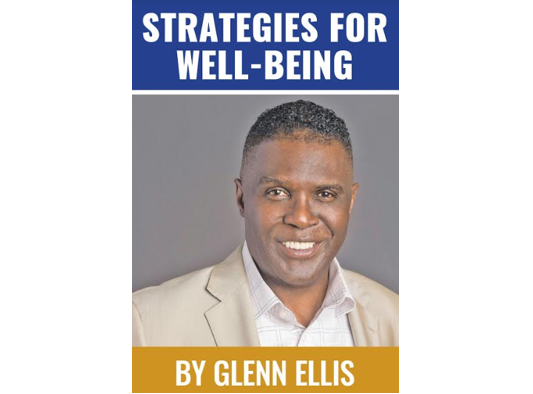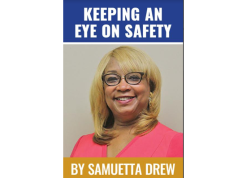By Glenn Ellis
There is a disturbing trend of closings of community-based, or “safety net” hospitals, which like most things in healthcare disproportionally and negatively impact communities of color; the poor; underserved and vulnerable.
Data from the National Association of Public Hospitals (NAPH) suggests that there are more than 6,500 public hospitals in the United States. Community or general hospitals are the most common medical facilities where people in this country receive care.
Public hospitals increasingly continue to bear the burden of the weaknesses in our nation’s health care system. The major problems are readily apparent in the emergency rooms and corridors of public hospitals. There we see visible signs of poverty, drug and alcohol abuse, crime-related and domestic violence, and infectious diseases such as acquired immunodeficiency syndrome (AIDS) and tuberculosis.
Public hospitals are frequently underfunded and understaffed, and service can be exceedingly slow. All-day waits in the emergency room for initial treatment are not uncommon. A NAPH survey found that the average wait to get a hospital bed upon admission from the emergency room was 5.6 hours, although waits of three to four days were not unusual. Seriously ill patients could wait an average of 3.2 hours to be admitted into intensive care units.
These safety-net hospitals deliver a considerable amount of care to Medicaid, uninsured, and other vulnerable patients. Safety-net hospitals include public hospitals that are often providers of last resort in their communities, academic medical centers that combine a teaching function with a mission to serve vulnerable populations, and in some communities, private hospitals that either because of their mission or the absence of public hospitals in the community, serve as the safety-net provider.
They often provide services that other hospitals in the community do not, such as trauma care, burn care, neonatal intensive care, and inpatient behavioral health. For many people, the public hospital emergency room has replaced the physician’s office as the place to seek primary health care services.
These hospitals also offer medical education for future physicians and other health care professionals. Safety-net hospitals are also an important source of care for undocumented individuals who are ineligible for Medicaid or subsidized marketplace coverage.
In addition to the recent closure of Hahnemann University Hospital, a 171-year-old, one of America’s oldest safety-net hospitals located in Philadelphia, the vulnerable and marginalized communities that depend on this hospital only found out when the news was announced with a press release; leaving one of Philadelphia’s most vulnerable communities without a hospital it had come to depend on.
Even more daunting is that this reflects a pattern of the closing of “safety net” hospitals across the country. Hospital closures already have created “medical deserts” in some rural towns and now threaten to create them in large urban centers. Just based on the economic principle of supply and demand, this scarcity of safety-net and critical-access hospitals threatens to further segregate our health system between haves and have-nots.
One line of thinking sees this trend as the consequence of private equity firms getting in the business of medicine. These relationships are focused on profit goals that don’t always align with the mission of a hospital, especially one like Hahnemann that serves a primarily low-income community. And Hahnemann is far from the only hospital that’s been bought in recent years by a buyout firm – private equity players spending a total of $10.4 billion last year to snap up hospitals and clinics, according to data provided to CBS MoneyWatch by Pitchbook, a research firm that tracks private investment data.
According to its website, in October 2014, Howard University and Paladin Healthcare entered into a management services agreement for Paladin to manage Howard University Hospital.
Looking at the announced closure of in-patient services at Mercy Hospital of Philadelphia, a few questions linger, unresolved, in my mind: 1) 50 or 75 years ago when the surrounding community, and the patients who the hospital served “looked” different, would closing the hospital even be considered? 2) Though Mercy Hospital’s parent company’s (Trinity Health System) website states that “Fidelity to the Gospel urges us to emphasize human dignity and social justice as we create healthier communities”; where is the regard for the thousands of residents in the community, who in this case live in one of the areas with the highest poverty rate, in the poorest major city in America? 3) Where’s the accountability in the fact that safety net hospitals, like all hospitals, have received, billions of dollars in public monies for uncompensated care, resident training, and a host of other purposes? 4) How can closing a hospital of any kind exclude the voices of the impacted communities?
Keep in mind, wherever you are in this country (rural or urban), safety-net hospitals play a vital role in our health care system, delivering significant care to Medicaid, uninsured, and other vulnerable patients. Watching the hospitals who serve these respective communities close, one after another, speaks volumes about who we are as a nation…or who we are.
During a recent trip to Canada, I asked my friends their opinion on closing safety net hospitals, and they responded by saying, “all of our hospitals are safety net hospitals!”
I’ll always remember being told about the reaction of an elderly African American man when he heard that Philadelphia General Hospital had closed, and he was just finding out…” They closed our hospital”!
Glenn Ellis, is Research Bioethics Fellow at Harvard Medical School and author of Which Doctor?, and Information is the Best Medicine. For more good health information visit: www.glennellis.com





